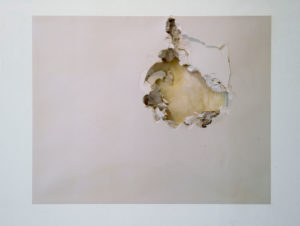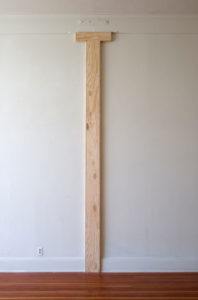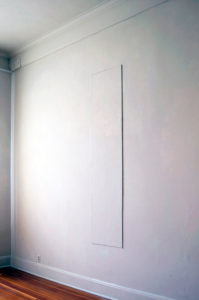
The Taoist sage Chuang Tzu famously dreamed that he had turned into a butterfly.
When he awoke, he couldn’t help but wonder whether it was he who had dreamed
of becoming a butterfly, or the butterfly that had dreamed of becoming Chuang Tzu.
In this show, Michael Zheng explored similar questions concerning perception and the sense we have of our place in the world, by complicating the distinction between objects and their contexts. He engaged the walls of the gallery itself, so that they no longer merely
circumscribed the art, in some important respects, they were the art. So what then was its frame?

An apparently blank wall of the gallery, upon closer inspection, revealed a
photograph of the wall pasted tightly to it. What here, if anything, was presented? Further on, a similar, slightly transparent photograph seemed to cover a hole cut through the gallery wall. Had Zheng actually damaged the wall? Was this a photograph of a hole in another wall, taken somewhere else and mounted here? Or wasit not a representation at all, but rather a transparent piece of plastic over an actual hole? For The Big I, Zheng cut out an 8’ by 1.5’ rectangle from the wall and raised it by one half an inch. The gallery itself became the piece, framed by the rectangle cut in it—not positively as a drawing, but negatively as an absence, a bracketing of the gallery. And, in As Is, sounds from the street outside echo ed uncannily from a speaker in the center of the gallery, both providing a frame for incidental, everyday phenomena, calling attention to their often surprising aesthetic qualities, and introducing the contextual frame for the gallery itself into the gallery, complicating the distinction between reality and the exhibition.

Other works in the show played with the distinction between words and images,
and the polyvalence of words themselves, to provoke new connotations through these confusions, and to question the basis of meaning. And an experiment with flower seeds and instructions for the audience to water the seeds “encouragingly,” “discouragingly,” and “neutrally,” explored questions concerning the relationship between faith and facts, and implicated the audience in the production of the show.